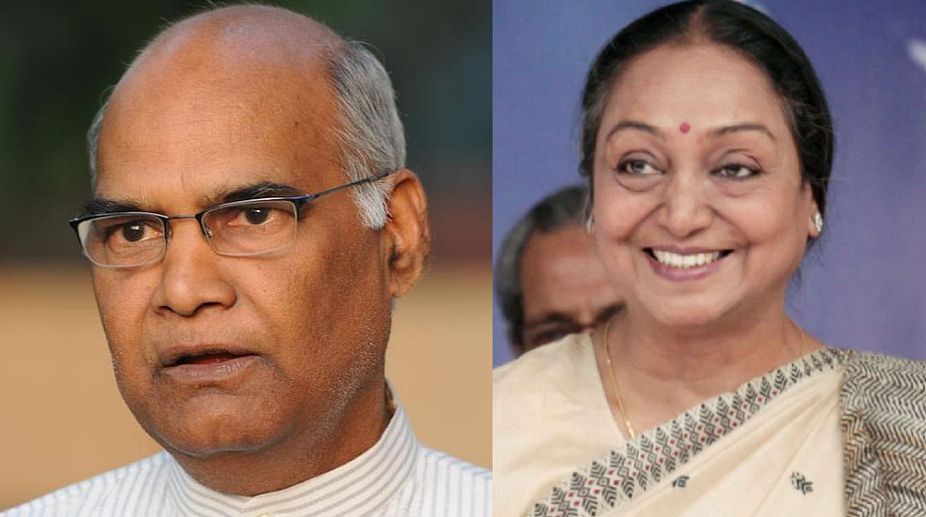Democrats’ Dilemma
As the United States enters the year of the next Presidential election, the Democratic Party finds itself at a crossroads, grappling with growing concerns about President Joe Biden’s chances of securing a second term.

The BJP’s choice of a Muslim, APJ Abdul Kalam, in 2002, and of a Dalit, Ram Nath Kovind, in 2017 for the President’s post, underlines the party’s realization of the need for a reorientation of its outlook.
The two selections are a concession to the political compulsions of the times which have eroded the earlier hegemony of the upper castes with which the saffron brotherhood has been traditionally associated as the savarna (upper caste) composition of the RSS, the apex body of the brotherhood, shows.
However, just as Kalam’s name came up unexpectedly while all attention was focussed on Vice-President, Krishan Kant, and Maharashtra Governor, P.C. Alexander, Kovind, too, is a surprise selection. There are two reasons why the BJP ~ or, rather, Narendra Modi (for the BJP, after all, is virtually a one-man party) ~ chose him. One is his Dalit background, which is expected to improve the BJP’s equations with the community at a time when these have been seriously strained by several recent incidents.
Advertisement
And the other is Kovind’s grounding in the RSS ~ the BJP’s friend, philosopher and guide ~ which is indispensable for anyone engaged in upward mobility under the present dispensation. There is also a third reason, which is Kovind’s low-key personality. Since Modi’s preference in the cabinet and the government is for those who will not pose the faintest of challenges to him, Kovind fits the bill perfectly.
Not to put too fine a point on it, he is likely to be as docile as former President Zail Singh, who was called Indira Gandhi’s poodle by the The Times of London.
Kovind’s ideological moderation is another plus point. Had he been as hawkish as the Tripura Governor, Tathagata Roy of the BJP, who wanted those who attended the terrorist Yakub Memon’s funeral to be kept under surveillance as potential subversives, then the former Bihar Governor might not have had a chance.
But now he fits into Modi’s sabka saath, sabka vikas (development for all) mode of thinking. In keeping with Kovind’s modest nature, his tenure in the Patna Raj Bhavan was appreciated by chief minister Nitish Kumar so much that he decided to break ranks with the other non-BJP parties and support his presidential candidature.
The decision has pitted the Janata Dal (United) leader against another Dalit, Meira Kumar, who is the nominee for the President’s post of the Congress and other non-BJP parties. The former Lok Sabha Speaker’s Bihar connection is also likely to put Nitish Kumar in some difficulty since she is the daughter of Jagjivan Ram, a foremost Dalit leader from the state who was associated with Jawaharlal Nehru and Indira Gandhi. However, perhaps the most significant aspect of the ensuing battle between the two Dalits for the House on Raisina Hill is how caste has become the defining feature of present-day politics.
For the BJP, the choice of a Dalit was unavoidable at a time of the caste conflicts between the Dalits and the Thakurs in Saharanpur, U.P., whose chief minister, Yogi Adityanath, is a Thakur.
The confrontation has also led to the rise of highly assertive young Dalits who have no hesitation in flaunting their caste, viz chamar, credentials and represent a force whose existence came into the limelight at the time of the bright young Dalit scholar, Rohith Vemula’s suicide, in Hyderabad Central University. Vemula’s opponents were members of the BJP’s student wing, the Akhil Bharatiya Vidyarthi Parishad (ABVP), which showed how the gulf between the Dalits and the saffron brotherhood has been widening.
The scene has been further aggravated by the lynching of a group of Dalits by gau rakshaks in Una, Gujarat, for skinning a dead cow, their traditional occupation. These incidents convinced the BJP that unless it tried to mend fences with the community, its electoral chances in the 2019 general election will be hit by the possibility of a DalitMuslim combine, as hinted at by a young activist of Saharanpur. The only option for the BJP, therefore, was to nominate a Dalit for the President’s post.
But to what extent such tokenism will help the party is open to question. The voters are far too clued in to such self-serving tactics to fall for the ploy. The Dalits among them will know that placing a member of their community in Rashtrapati Bhavan will not change the Hindutva camp’s ingrained bias against the lower castes, which was highlighted when the Dalits of the Musahar sub-caste, who are known to eat rats. were given cakes of soap and caches of shampoo to clean themselves before a visit to their hutments by Yogi Adityanath.
In the long run, therefore, the sense of alienation between the Dalits and the BJP will remain, just as it has remained between the Muslims and the BJP despite the elevation of Kalam and the presence of several ministers in Modi’s cabinet. The Opposition’s choice of Meira Kumar, too, is likely to be seen as another act of tokenism. In any event, the difference in material conditions between the former diplomat and the average Dalit is as wide as ever as it is between Kovind and the lowly members of his caste.
Not withstanding the highlighting of caste, the confrontation between the BJP and its adversaries will be essentially political with the various parties looking for an opportunity to advance their partisan agendas of expanding their areas of influence.
The writer is a former Assistant Editor, The Statesman
Advertisement